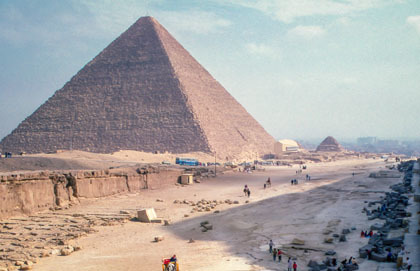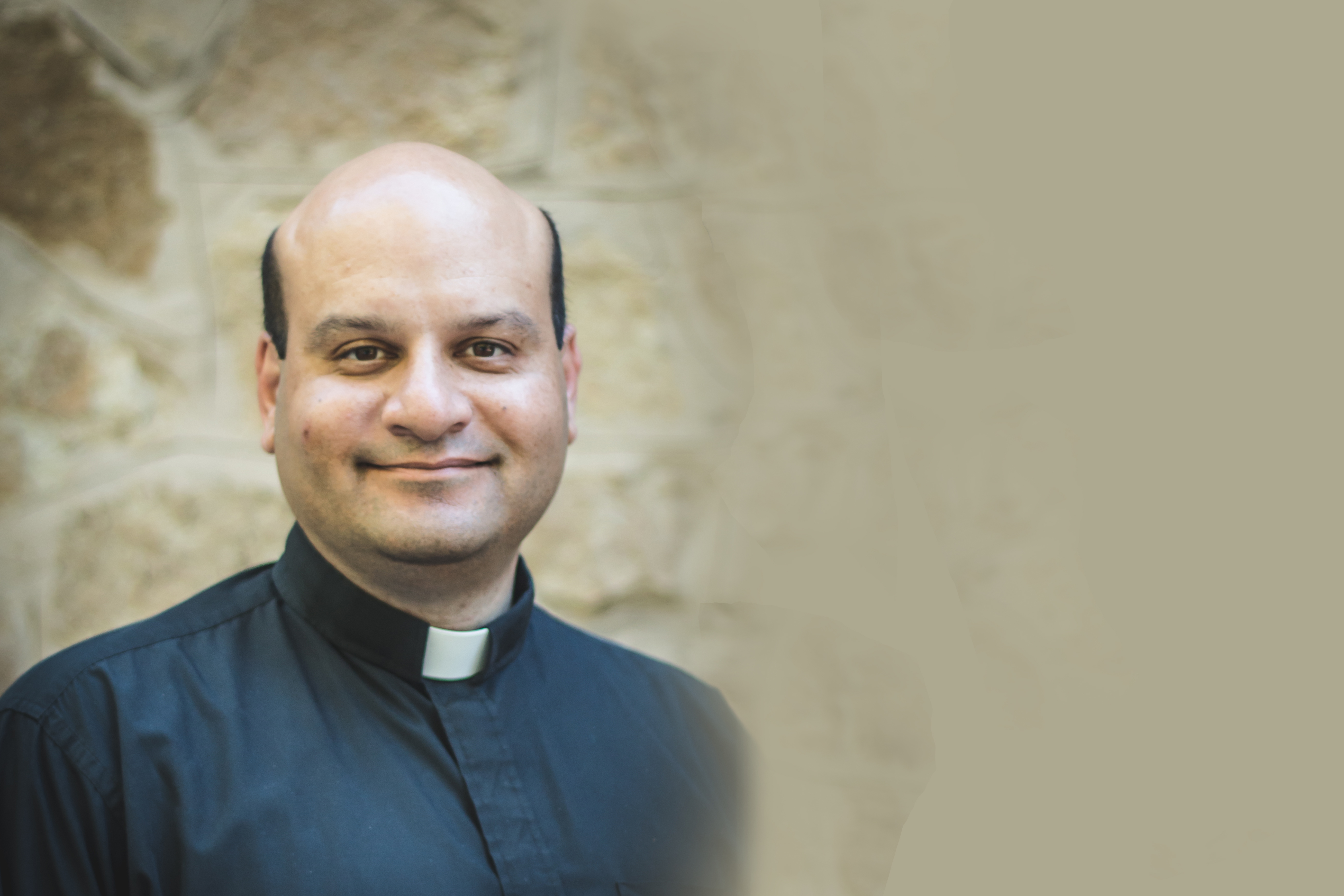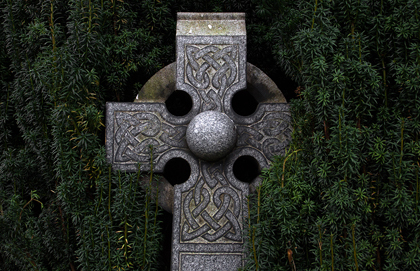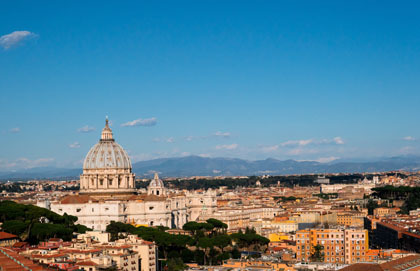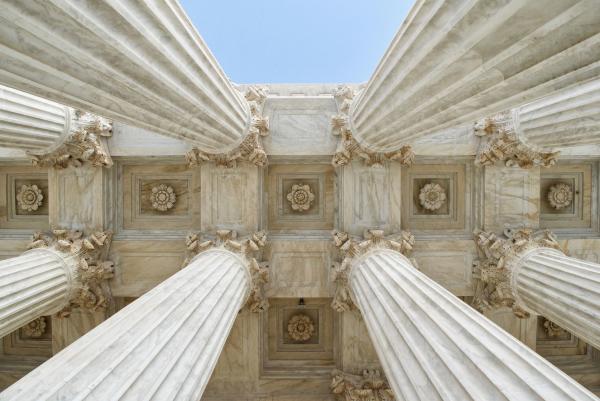On Friday, Pope Francis and Bartholomew, Patriarch of Constantinople, will be together in Cairo to address a peace conference hosted by the Al-Azhar mosque and university, sometimes called the “Vatican” of the Sunni Muslim world. For the leadership of global Christianity – pope and patriarch – to meet is no longer remarkable, as it was in 1964 when Pope Paul VI and Patriarch Athenagoras met in Jerusalem after nine centuries of estrangement.
Yet that they are meeting in Cairo, at the invitation of the premier theological centre of the Islamic world, is of supreme importance. If the Christian tradition can be offered to Muslim scholars working on questions of violence and coercion in the face of an aggressive jihadism, it is hard to think of a more opportune time and place. These days need our attention and our prayers.
My eye was caught though by the image being used for the papal visit, employing the motto “The Pope of Peace in Egypt of Peace.”

It features Pope Francis and a dove. I presume it is meant to be a symbol of peace, and not of the Holy Spirit, a subtle reminder that the Christian revelation of the Trinity means that God is a communion of persons bound together in love. The Muslim crescent and the Christian cross appear, though in a most unfortunate bit of graphic design, it appears as if the crescent is eating the cross, Pac-Man style.
Yet what I find most startling is the use of the great pyramids and the Sphinx in the logo. The Vatican likely just chose the most common symbols of Egypt, as one might choose the Great Wall for China or the Eiffel Tower for France. However, the pyramids of ancient Egypt have a deeper resonance for Christians of a certain Biblical vision. It may be that they were seen by Moses and the Jewish people at the Exodus. Hollywood likes to portray the enslaved Jews working on them.
More than that, the pyramids in all their architectural, engineering, mathematical and monumental splendor are exactly what Biblical religion came to condemn. More than 15 years ago, after a visit to Egypt, I reflected on the contrast between the pyramids of ancient Egypt and the central fact of Christianity, the empty tomb. As the Pope and the Patriarch head to Cairo during the Easter season, it might serve our Convivium readers to offer it here.
“Standing under the watchful gaze of the Sphinx, I was reminded that the pyramids are tombs – impressive tombs to be sure, but tombs nevertheless. The pyramids are rightfully reckoned amongst the wonders of the ancient world – the scale was immense, the architecture precise, and within, the pharaohs well preserved, the walls painted with intricate hieroglyphs, the rooms filled with all the provisions necessary for the afterlife. One of the greatest civilizations in history, the most enduring artifacts of ancient Egypt today are these tombs, monuments to their aspiration to immortality.
“The ancient Egyptians are not alone in this aspiration. The desire to live forever lies deep in the human heart and every culture needs to give answer to it. The answer of ancient Egypt lay in the tombs of the pharaohs, where they lay amidst rooms literally stuffed with the achievements of their culture.
“The Christian answer to the aspiration to eternal life is also a tomb, but a tomb of a different sort. The Christian points to the tomb hewn out of the rock in a garden outside Jerusalem’s old city wall, the tomb of a Galilean carpenter who did not even own the shroud in which he was wrapped. The tomb is not full. Indeed, the most important fact about the Christian tomb is that it is empty.
“Some historians believe that the ancient Egyptians killed the workers who built the secret entrances to the pyramids in order to guard the tombs against thieves. For millennia grave robbers and archaeologists have sought out the Egyptian tombs to raid what was inside. The Christian message is quite the opposite: There is nothing here to steal, the tomb is empty. All four Gospel accounts insist on that one historical fact – that the tomb was empty. Matthew and Mark even have the angels indicating that the place where the corpse lay is now vacant.
“‘The empty tomb of Jesus Christ is the promise given in history of that day when all the tombs shall be empty,’ said Father Raniero Cantalamessa, the preacher of the papal household, commenting upon the scene of Pope John Paul II visiting the Church of the Holy Sepulcher in March 2000. The empty tomb fulfills the desire for immortality.
“The empty tomb near Calvary stands as a rebuke to the mammoth tombs that rise up against the horizon across the Sinai peninsula. It is not a long way from the Nile River delta to the hills overlooking the Jordan River valley, but the empty tomb is the definitive rejection of all that is represented by the pyramids of ancient Egypt. The journey from Giza to Golgotha is the path from self-assertion to salvation, from the cult of the cosmic gods to the worship of the God of the cosmos.
“Professor Leon Kass, a University of Chicago scholar who reads the Scriptures as a believing Jew, has argued that the Torah is in part an anti-Egyptian polemic. All that ancient Egypt represented is rejected in the creation of the people of Israel, and their very identity is partly constituted by being anti-Egyptian. The first-born of the Egyptians he smote, for His love endures forever, sings the psalmist in Psalm 136, a hymn to the Lord’s twin wonders – creation of the world and destruction of Pharaoh.
“As Christians, we are heirs to this same history of salvation. The Exsultet of the Easter Vigil refers to the passage through the Red Sea. And later, after that account is read, the congregation joins in the hymn of the Israelites, The Lord is a warrior! The Lord is his name. The chariots of Pharaoh he hurled into the sea… Let us sing to the Lord, for he has covered himself in glory (cf. Exodus 15). On the night in which Christ rose from his tomb, the Christian people now sing exultantly of the burial in the Red Sea of pharaoh’s chariots and charioteers.
“Why the ferocity of the Biblical attacks on the civilization of the pharaohs? The Chosen People are referred to dozens of times in the Old Testament as having come “out of Egypt”. The Exodus defines who the Chosen People are; the common experience of having come “out of Egypt” is almost a synonym for Israel. And this even predates slavery in Egypt, for Jacob – the father of the twelve tribes, Israel himself – dies in Egypt, but not before making his son Joseph promise that his body will be taken back to the promised land: Do not bury me in Egypt… carry me out of Egypt (Genesis 47:29-30). As Joseph did for his father, so he made his descendants promise, that his bones, too, would be carried away, “out of Egypt” (Genesis 50:25).
“Biblical Egypt is not a land of pure wickedness or oppression – it is not Babylon. Indeed, it was a land of refuge for Jacob and his sons, and later it would serve the same purpose for the Holy Family. St. Matthew speaks of the flight into Egypt, but at the same time refers to prophecy that the Messiah would come out of Egypt (Matthew 2:15). Egypt is a land to leave behind.
“Ancient Egypt was a land to leave behind precisely because it was such a prosperous and successful civilization. Or rather, because it achieved its greatness through a mastery of – and a faith in – the natural world. Man needed to break out of Egypt because all that Egypt offered was the best that man could do through reliance on his own reason. And that is not only not good enough for salvation, it is a positive hindrance to it. Salvation begins with the realization that man is not capable of saving himself, not capable of mastering his world, not capable of living forever. The enormous energies of ancient Egypt were poured into precisely those tasks. If pride was the original sin in Eden, Egypt was sin run amok – not in debauchery, but worse, in delusions of divinity.
“The pantheon of Egyptian gods was populated by the forces of nature, which the scholars of ancient Egypt were extraordinarily successful at understanding. But cosmic gods – like river gods, and crocodile gods, and fertility gods – are not really gods at all, but the names given to phenomena that are subject to man’s knowledge and even manipulation. They were not so much gods as they were testaments to the Egyptians’ own knowledge.
“Non in dialectica complacuit Deo salvum facere populum suum said St. Ambrose, which could be translated as meaning that not by the ways of logic did it please God to save his people. Not by the ways of ancient Egypt would God save his people, where men achieved scientific and engineering feats that even today defy explanation, but by the ways of the ragtag farmers and shepherds whom the Egyptians kept for slaves. Salvation that comes by way of the empty tomb begins with the realization that by himself man can aspire only to being buried in a fancy tomb.
“Ancient Egypt represents the best man can do on his own, under gods of his own creation, to save himself. And because it was the best attempt, it needed to be drowned in the Red Sea, as a warning to all those who would seek salvation through man’s self-assertion. Israel is the people saved for no other reason than God chose to save them (cf. Deuteronomy 7:7). The polemic against Egypt is a warning against the ultimate emptiness of all that man does without God.
“Christians look at Easter to a different kind of emptiness, the emptiness of the tomb that testifies that there is another way, a way that depends only on allowing oneself to be chosen. Man chose for himself in Eden and ended up building tombs in Egypt. The folly of the pharaohs was to build tombs as eternal homes. The empty tomb in the garden is God’s definitive word that a tomb is no place for man to live.”


